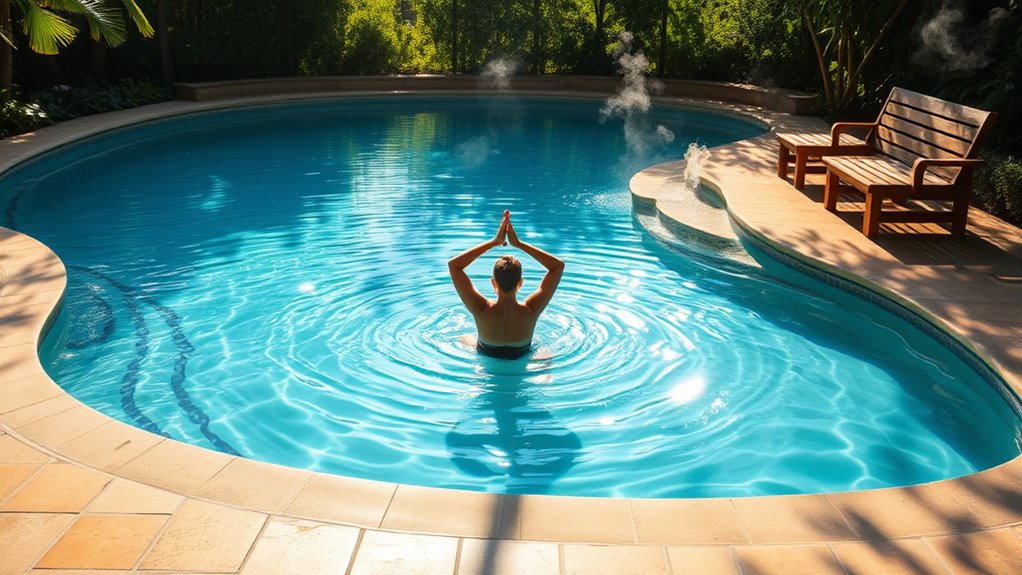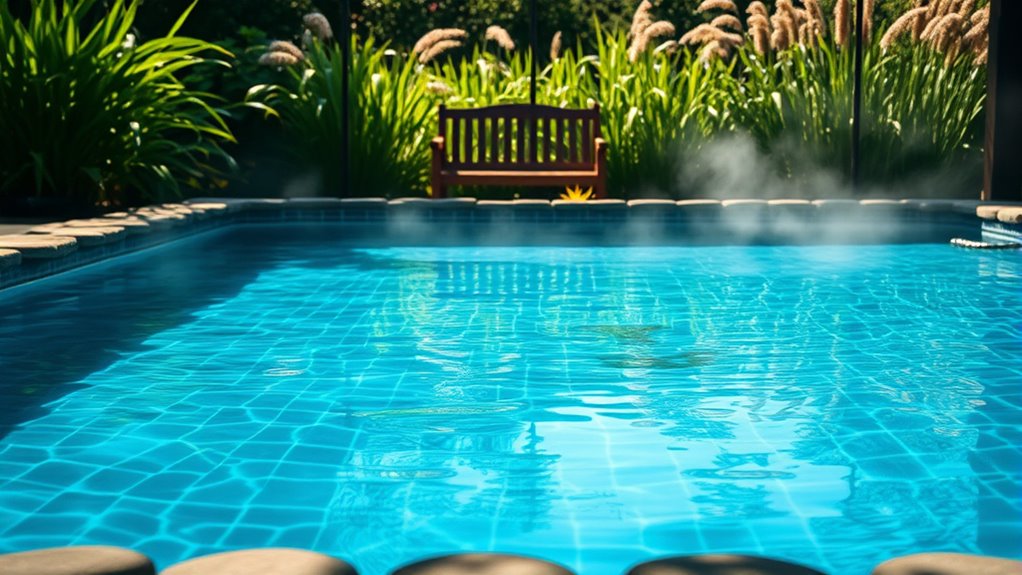Therapy pools have played an essential role in wellness history by bridging ancient healing practices and modern rehabilitation methods. Various cultures realized water’s restorative properties, using it in therapeutic baths and rituals. Today, therapy pools offer specialized equipment that enhances recovery for numerous health conditions, emphasizing a low-impact, supportive environment. This evolution continues to improve holistic health outcomes, showcasing water’s importance in wellness. Discover more about how therapy pools are shaping today’s health practices.
Key Takeaways
- Therapy pools have historical roots in ancient cultures, recognized for their healing properties and used in wellness practices for centuries.
- The 19th century marked the evolution of hydrotherapy, integrating therapy pools into medical treatments and rehabilitation programs.
- Modern therapy pools are equipped with advanced features that enhance recovery and rehabilitation, catering to diverse health needs.
- Aquatic therapy benefits various conditions, providing a low-impact environment that promotes physical and mental well-being for patients.
- Therapy pools represent a continuous link between ancient healing traditions and contemporary wellness practices, emphasizing water’s vital role in health.

Throughout history, while various cultures have recognized the healing properties of water, therapy pools have emerged as an essential component in wellness practices. From the ancient Egyptians to the Greeks and Romans, people understood that water could heal both the body and mind. They used it in rituals and medical practices, promoting overall well-being. The concept of therapeutic baths dates back to these early civilizations, where hot springs and natural water sources served as places of healing. In countries like Japan and China, specific healing springs became focal points for therapeutic treatments, underscoring the ancient belief in water’s restorative powers.
As time progressed, the 19th century saw the rise of hydropathic establishments, particularly in Britain. These facilities focused on water treatment for health, paving the way for modern aquatic therapy. Key figures like John Smedley played a noteworthy role, introducing milder forms of hydropathy and ushering in a new era in water therapy history.
During events like the Franco-German War, cooling baths showcased hydrotherapy‘s versatility, effectively treating fevers and demonstrating the potential of water in rehabilitation. By the late 1800s, hydrotherapy began to integrate into mainstream medicine, with more establishments offering water-based treatments and formalizing training for healthcare professionals.
In today’s world, therapy pools have evolved dramatically with specialized equipment designed for rehabilitation. Adjustable temperatures and resistance features in modern therapy pools revolutionize how you approach recovery. Institutes and organizations, such as the Aquatic Therapy and Rehabilitation Institute (ATRI), emphasize structured training in aquatic therapy, ensuring that practitioners are well-equipped to provide effective care.
Clinical applications of modern aquatic therapy are vast, utilized in hospitals and clinics for rehabilitation programs that are evidence-based and focused on promoting healing. The benefits of aquatic therapy are extensive, particularly for various health conditions. Whether you’re dealing with neurological disorders, orthopedic injuries, or chronic conditions, the buoyancy and resistance of water create a low-impact environment ideal for rehabilitation.
Aquatic exercise not only improves cardiovascular fitness but also serves as a safe and supportive medium for physical activity. Additionally, the therapeutic environment of aquatic therapy can greatly enhance mental well-being, making it an essential aspect of holistic health.
In essence, therapy pools have become a fundamental element in wellness history, bridging ancient practices with modern advancements to support health and recovery across various conditions. You can appreciate how far we’ve come in understanding the profound impact water can have on our well-being.
Frequently Asked Questions
Are Therapy Pools Suitable for All Ages?
Yes, therapy pools are suitable for all ages!
Whether you’re an adult managing arthritis or a child with autism, these pools offer tailored support for your specific needs. The water’s natural resistance helps strengthen muscles while providing a safe environment for rehabilitation.
Plus, adaptive equipment and expert therapists guarantee everyone can participate comfortably. You’ll find that aquatic therapy promotes wellness and confidence, making it an excellent choice for individuals of any age.
How Often Should One Use a Therapy Pool?
You should aim to use a therapy pool at least three times a week for ideal benefits, especially if you’re managing chronic conditions like low back pain.
Regular use helps reduce pain and enhances mobility. Consistency’s key; the more often you engage in aquatic therapy, the better your results will be.
Even if you’re just looking for general wellness, incorporating therapy pool sessions into your routine can greatly improve your overall health and well-being.
What Conditions Benefit Most From Therapy Pools?
Think of therapy pools as a gentle embrace for your body, offering relief and support.
Conditions like arthritis and chronic back pain thrive in this buoyant environment, helping you regain mobility.
If you’re recovering from a stroke, or managing MS, the water’s resistance aids in building strength with minimal strain.
Athletes recovering from injuries find solace here too, while the calming water reduces stress and enhances overall wellness.
Can Therapy Pools Help With Mental Health Issues?
Yes, therapy pools can profoundly help with mental health issues.
When you immerse yourself in water, you experience a calming effect that reduces stress and anxiety. The buoyancy provides relief from physical tension, promoting relaxation.
Engaging in aquatic activities boosts endorphins, enhancing your mood. Additionally, the repetitive movements mimic meditation, fostering mindfulness.
Are Therapy Pools Covered by Insurance?
If you’re considering dipping your toes into the world of therapy pools, you might wonder about insurance coverage.
Generally, insurance plans, including Medicare and Medicaid, can cover aquatic therapy if it’s deemed medically necessary and prescribed by a healthcare professional.
Just keep in mind that proper billing codes and licensed therapists are required for coverage.
Conclusion
In summary, therapy pools have played an essential role in wellness history, offering a unique blend of relaxation and rehabilitation. Did you know that studies show aquatic therapy can reduce pain by up to 70% for those with chronic conditions? This remarkable statistic highlights the transformative power of water in healing. As you reflect on the significance of therapy pools, consider how they’ve shaped wellness practices and continue to enhance lives today.









